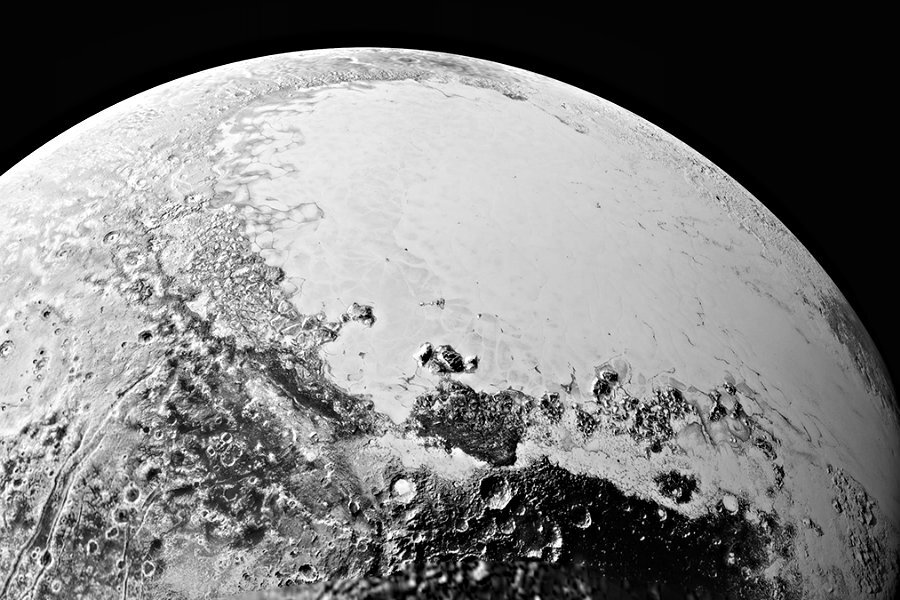Does Pluto harbor a hidden liquid ocean?
Last year, NASA’s New Horizons mission found evidence that there was once a massive subsurface ocean on Pluto, and that it might still exist in some form underneath the planet’s surface.
New evidence, found by a team of researchers from Brown University and the Planetary Science Institute, suggests that Pluto’s ocean is still there, and that it is still liquid.
The study’s lead author, Brown graduate student Noah Hammond, worked with colleagues to analyze data from the New Horizons mission and develop a thermal computer model of Pluto’s evolution.
Astronomers have known for a long time that our former ninth planet, since demoted to dwarf planet, has an icy surface. Nitrogen, methane, and carbon dioxide ices comprise the surface of the planet, while astronomers say it likely has a rocky core.
But what is in the middle? Is it a completely frozen ocean, or is there a chance it remains liquid?
Research by Mr. Hammond and his colleagues, accepted last week for publication in the journal Geophysical Research Letters, suggests that the dwarf planet’s subsurface ocean is liquid.
If Pluto’s subsurface ocean had frozen, researchers say, the whole planet would have contracted. Yet the massive mountains and deep faults on the dwarf planet’s surface suggest that Pluto has been expanding, a fact consistent with an unfrozen subsurface ocean.
“What New Horizons showed was that there are extensional tectonic features, which indicate that Pluto underwent a period of global expansion,” Hammond said in a Brown University press release. “A subsurface ocean that was slowly freezing over would cause this kind of expansion.”
Due to low temperatures and high pressure on Pluto’s surface, a different type of ice would have formed, had the planet frozen fully. That form of ice, Ice II, has a dense crystalline structure, and can only form if the planet’s outer shell is at least 260 meters thick. Pluto’s outer shell of ice is at least 300 meters thick, and yet the planet does not seem to have shrunk, indicating that ice II has not formed.
“We don’t see the things on the surface we’d expect if there had been a global contraction,” Hammond said in a press release. “So we conclude that ice II has not formed, and therefore that the ocean hasn’t completely frozen.”
The nitrogen and methane ices on Pluto’s surface could also be keeping the underwater ocean warmer.
“Those exotic ices are actually good insulators,” said Hammond in a press release. “They may be helping Pluto from losing more of its heat to space.”
Researchers say that that this research has implications for the search for new planets. If a liquid ocean can exist beneath Pluto’s frigid surface, watery planets could exist elsewhere in the universe, despite considerable distance from their stars.
“That’s amazing to me,” Hammond said. “The possibility that you could have vast liquid water ocean habitats so far from the sun on Pluto – and that the same could also be possible on other Kuiper belt objects as well – is absolutely incredible.”






